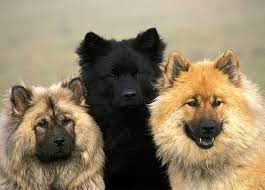Dogs have the capacity to be much more than family pets. While they make wonderful companions, canines also do some great work that can be indispensable to humans. In centuries past, certain breeds were raised specifically for special kinds of jobs.
It’s well known that dogs can be trained to guide someone with a visual impairment or to assist their owners with hunting game. However, canine jobs include quite a variety of different responsibilities, since different breeds have in-born natural aptitudes for certain activities. Here’s a closer look at six interesting dog jobs.
- Service or assistance
Chances are, the first type of working dogs that come to mind are canines that help people with disabilities. Service or assistance dogs are generally groomed from puppyhood by skilled handlers with the required expertise. This encompasses canines trained to guide individuals with vision difficulties, dogs taught to assist people with various mobility challenges, hearing dogs for those with this impairment, and medical assistance dogs such as those able to support their owners when they have seizures.
The first school in America founded to train guide dogs was called The Seeing Eye, hence the early reference to these animals as “Seeing Eye” dogs. Today, unless we’re talking about dogs that graduated from that particular institution, these animals are simply called guide dogs.
Dog breeds that usually do service or assistance work are the German shepherd, golden retriever, standard poodle, border collies, and Labrador retriever.
- Therapy
The scope of animal-assisted therapy is wide and dogs feature prominently in this field. Essentially, these canines are trained to provide emotional support to people in need of comfort for various reasons. For instance, therapy dogs may visit hospital wards or residential care facilities to spend time with patients who are sick or injured.
These working dogs can also be found in schools, childcare centers, and other places. Their presence can be a real comfort for anyone dealing with a stressful situation. Canines trained for therapeutic purposes have to demonstrate the right temperament, be able to remain calm in the face of tension, and be properly socialized.
Virtually any breed of dog can be trained for this occupation as long as they’re even-tempered, unaggressive, and can be trained to respond to commands.
- Police work
You may have heard police dogs referred to as “K9s.” These animals work alongside law enforcement officers while they’re on duty. Typically, each K9 lives with their handler, basically as part of the family when they’re not assisting with police work. This means that the handler becomes responsible for caring for the dog as well as ensuring their training is current.
Police dogs can do anything from chasing down and restraining criminals until the officer can reach them, to sniffing out illegal substances, to tracking missing persons. German shepherds are often used for police work, but it’s not uncommon to find other breeds like Labrador retrievers, beagles, and Belgian Malinois involved as well.
- Search-and-rescue
Trained search-and-rescue dogs can be lifesavers in emergencies and natural disasters. The services these dogs provide are geared to the specific environments they work in and the type of disasters that can happen there. For example, a dog may be trained to rescue people in deep snow after an avalanche, track hikers lost in the wilderness, retrieve a swimmer who is unconscious in the water, or locate bodies in wreckage.
Such canines must have superior agility, excellent hearing, and a strong sense of smell. Breeds that are trained in this delicate and critical work are border collies, Germans shepherds, golden retrievers, Labrador retrievers, and Leonbergers.
- Herding
Another useful canine profession is herding livestock—typically cattle and sheep, although some dogs are trained to herd other animals such as reindeer or fowl. Although certain breeds are natural herders, it should be noted that not all individual dogs of these breeds take to the task without training.
The types of canines typically used for herding include Australian cattle dogs, German shepherds, border collies, Kelpies, sheepdogs, and corgis. Dogs with this skillset have the opportunity to show their stuff at competitive dog herding trials.
- Watching and guarding
Being a great watchdog or guard dog is something that many kinds of canines, whether purebred or mixed breed, can excel at. However, these jobs require intelligence, training, and lots of reinforcement on the part of the owner. There is a technical distinction between a watchdog and a guard dog: a watchdog’s job is to alert owners to intruders and scare them away with loud barking, while a guard dog is trained to bark at and then attack intruders if necessary. Watchdogs and guard dogs may protect homes, commercial buildings, and livestock.
The German shepherd and Belgian Malinois are often assigned guard duty to protect military personnel, while the Great Pyrenees is the preferred breed in some regions for keeping predators away from livestock. Smaller dogs can be used as watchdogs; though they aren’t intimidating, they can be excellent at alerting their owners to intruders.
In summary
With a little training and proper handling, our canine friends can perform a range of essential services. Of course, most dogs perform another “job” that’s just as important: they are our beloved companions and family pets.

